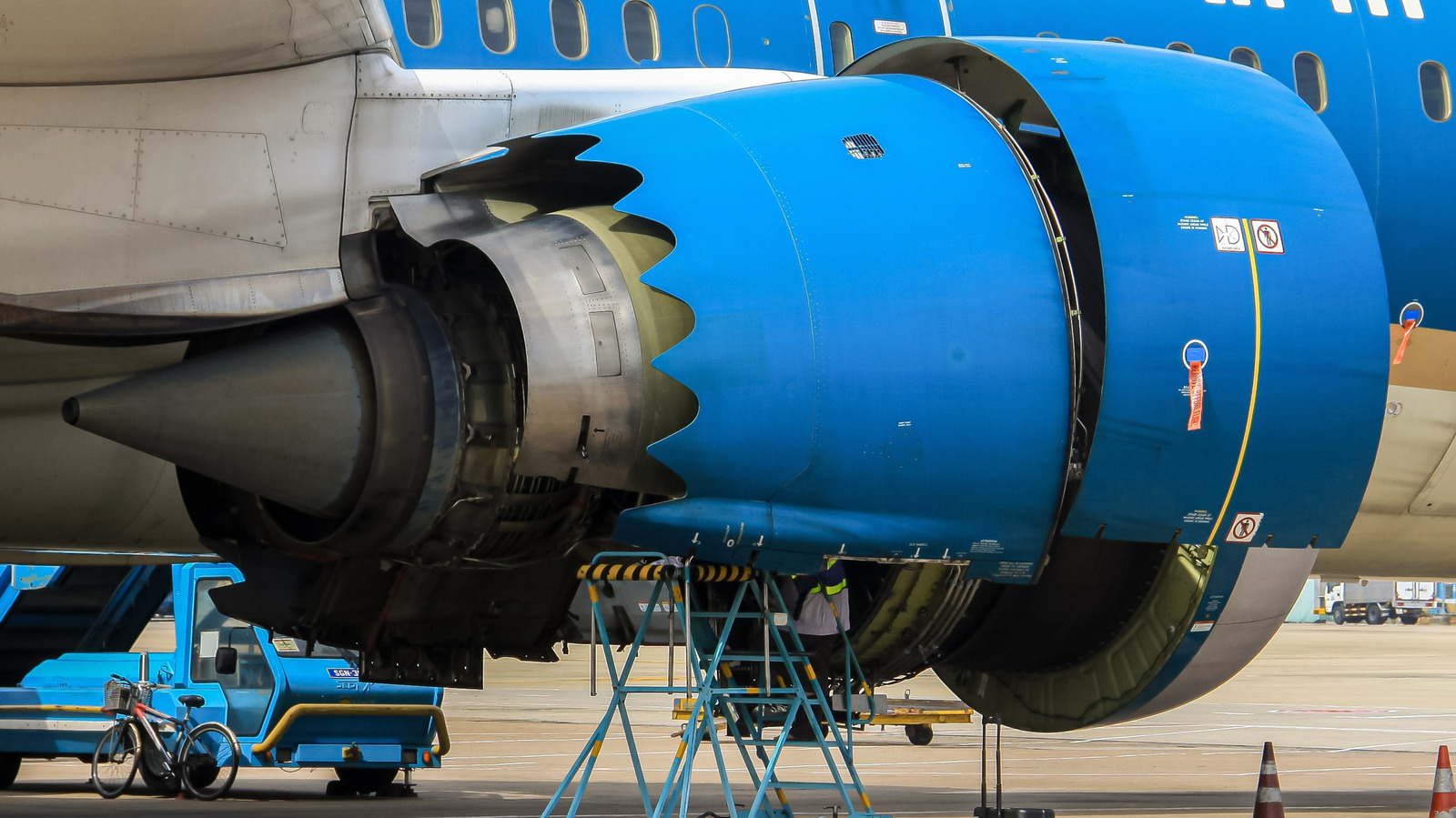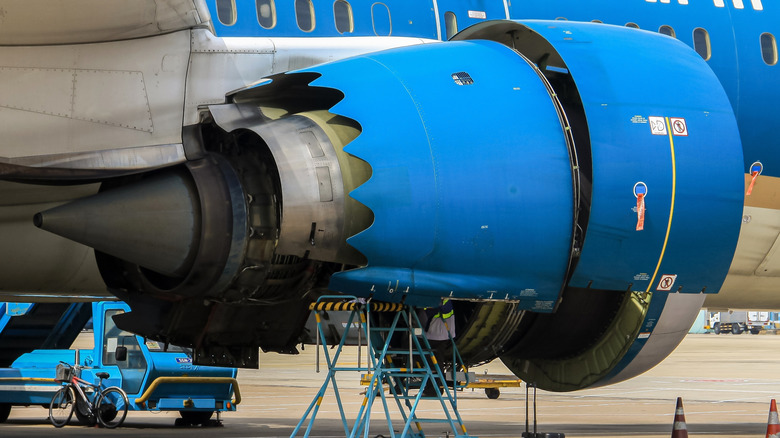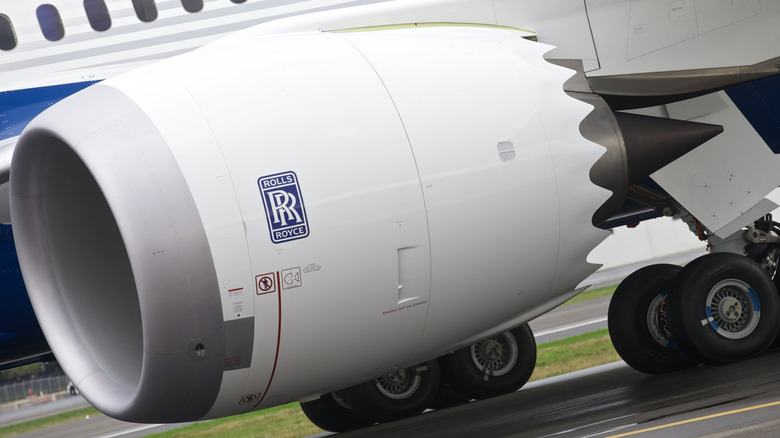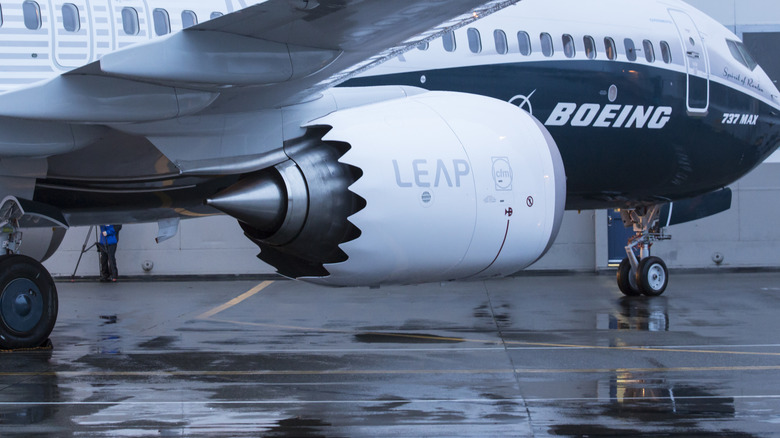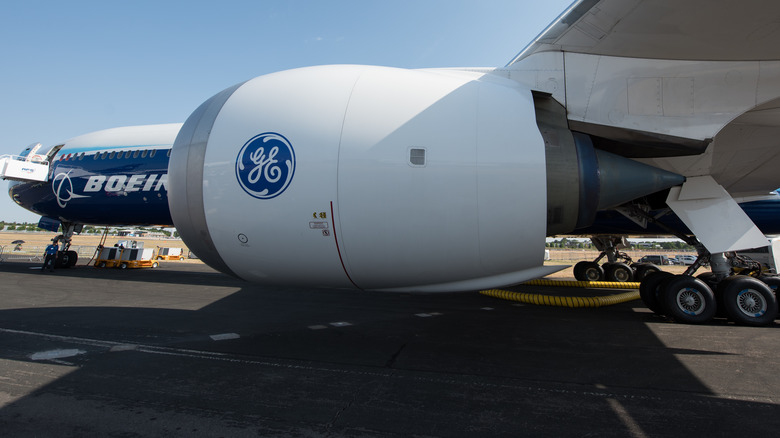You may have noticed them on certain planes when looking out the terminal windows — a kind of shark-toothed look on the back of some planes’ engines. Commercial airplanes, outside of their livery, are designed for function, not aesthetics, so those shark teeth must serve some kind of purpose, right? In fact, they do: Called engine chevrons, they reduce jet engine noise, which can be pretty deafening.
And yet, Boeing’s new 777X (pronounced “triple-seven ex”), its biggest in-development project meant to update the aging 777, doesn’t feature chevrons. While the technology was all the rage in the aviation world a decade or two ago, since then, progress has marched on. In fact, Boeing’s biggest rival, Airbus, never used chevrons in the first place. New engine designs have found other ways to reduce noise, without the drawbacks that chevrons introduced to flights. In testing now, the 777X sports the most bleeding-edge engines in Boeing’s lineup, the General Electric GE9X, which have broken new ground in both materials and construction.
What exactly are engine chevrons?
As anyone who’s ever been near a jet plane knows, engines are noisy. The physics behind that noise has to do with the fact that what engines do, essentially, is suck in a lot of air, set it on fire (internal combustion), and then shoot that superheated exhaust out the other end. In that sense, it’s not all that dissimilar from a car — which is also very noisy if it doesn’t have a muffler.
That hot air blasts into the atmosphere around it, which of course is much cooler. That creates all kinds of friction leading to vortices, which in turn makes that signature shrieking wail. Engine chevrons were developed in a joint research project between NASA, Boeing, and GE, specifically to compress that wail down. So they might look like a kid took a pair of craft edge scissors to the engine, but what they do is disrupt that exhaust in such a way that a buffer layer of smaller vortices is created to smother the larger ones. The result is reduced noise.
Getting a handle on noise is good for passengers and their ears, of course, but it’s also important for the airline business. Cities around the world have strict noise pollution rules and following those rules is part of what determines flight paths. If a plane produces less sound in the first place, new flight paths can open up.
What is the engine chevrons’ biggest drawback?
As usual in the world of engineering, there are trade-offs that come with innovation. Again, the chevrons essentially tamp down on exhaust vortices by making more vortices to surround and smother them. But as a matter of physics, any time you’re creating a vortex, you’re pulling energy out of the source. In other words, making more vortices reduces the thrust of the engine, which is the whole point of the engine in the first place. It may not seem like much, but engine chevrons drop thrust by around half a percent. Multiply that by the entire length of a flight, flight after flight, and it adds up to a lot of extra fuel burned.
Still, for a long time Boeing figured the economics still worked out, since with less noisy engines it could strip out a bunch of the sound insulation in the cabin. That meant the aircraft were actually much lighter than they otherwise would have been, and that weight savings equaled fuel efficiency. That’s why the chevron technology appeared on Boeing 747-8s, 787 Dreamliners, and one of Boeing’s biggest headaches, the 737 MAXs.
What changed with the 777X?
Obviously, if there were a way to reduce engine noise without also reducing thrust, that would be ideal. So when Boeing had General Electric make it the biggest and best engines in history for its 777X project, that’s exactly what it set out to do.
The result is that GE developed a brand new nozzle design and new materials, a type of ceramic matrix composite, which essentially is so heat-resistant that it allows for a more compact, mixed exhaust stream. That produces less friction, and thus fewer vortices in the first place (as opposed to the chevrons, which reduce noise by creating even more vortices). In turn, that means that energy isn’t getting pulled away; in other words, thrust isn’t getting reduced. Therefore, the jet is quieter without losing any of its power.
As if that wasn’t enough, the GE9X engine also features a honeycomb architecture inside. Just like car mufflers and resonators do, it creates good old-fashioned acoustic disruption — sound waves cancelling each other out — to reduce noise even further. If Boeing can only get them to stop failing safety tests, they’ll be the biggest and most fuel-efficient engines in the air, all without blowing your eardrums out.


